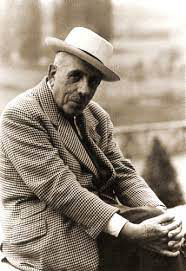
On Wednesday, Dec. 7 at 12:10 p.m., the Free Admission Glendale Noon Concerts program will be streamed on Facebook and YouTube. Violinist Nancy Roth and pianist Lorenzo Sánchez will perform works by Poulenc and Dvorak.
The video will be available continuously.
The link to the stream can be found at http://glendalenoonconcerts.blogspot.com.
The program features the duo recital Nancy Roth, violin and Lorenzo Sánchez, piano. They will be performing portions of Francis Poulenc “Sonate pour violon et piano,” (1899-1963) (revised1949), and Antonín Dvorák’s “Sonatina for Piano and Violin Op. 100,” (1841-1904).
Nancy Roth, violinist (and violist), is currently the concertmaster of the Culver City Symphony and Marina del Rey Summer Symphony. She is also concertmaster of the Chamber Orchestra of the South Bay and a member of the Pasadena Symphony. She is a former member of the Los Angeles Chamber Orchestra, was co-principal violist of the Graz Philharmonic in Austria, and served many years as concertmaster of the San Fernando Valley Symphony Orchestra and the Carson-Dominguez Hills Symphony. Roth has been a featured soloist with numerous Southern California orchestras including the Culver City Symphony, Carson Symphony, Chamber Orchestra of the South Bay, Los Angeles Chamber Orchestra and Southland Symphony Orchestra. She has given recitals and radio broadcasts in the United States, Austria and Mexico, and is currently a member of the new music group “TEMPO” based at California State University Northridge. Roth is a member of the String Family Players (quintet), which performs educational programs for the Music Center On Tour, and she has been on the faculty of the Max Aronoff Viola Institute Summer Music Festival. She has played baroque violin and viola with James Tyler in the London Early Music Group and Los Angeles Musica Viva. Nancy holds a Bachelor of Music from CSUN, a Master of Music from the Juilliard School and a Doctorate of Musical Arts from the University of Southern California.
Lorenzo Sánchez, pianist, has enjoyed interpreting music of a variety of styles and nationalities in the United States, Mexico, and Europe. Sánchez premiered Robert Guillory’s “Concertino for Piano and Orchestra.” His interest in Polish music led to him giving several lecture performances at the Paderewski Festival in Paso Robles. He has performed for African American composer George Walker and Japanese composer Mitsuru Asaka in Hawaii. He has played for several choirs touring Italy, The Vatican and several Filipino community celebration masses at Our Lady Queen of Angels in Los Angeles. Looking toward his heritage, Sánchez has edited and helped publish piano works by Mexican composer Domingo Lobato. He has recorded two CDs of Lobato’s solo piano works, and recently released a CD with clarinetist Virginia Figueiredo. All of his recordings are available on iTunes, Amazon, Spotify and others. Unfortunately, the global pandemic caused the cancellation of concert appearances in Brazil and Mexico this year.
Sánchez holds a Doctorate of Musical Arts degree from the University of Southern California.
Program notes: “Sonata pour violon et piano” by Francis Poulenc. Writing a sonata for the violin did not come naturally for Poulenc. His first sketches came as early as 1918. After a few more attempts between 1925 and 1935, the fourth version (1949) is what we have today. Poulenc was said to have written the following after completing his score: “The monster is finished. I will begin the realization. It is not bad, I think, and in any case very different from the eternal ‘violin-melody line’ of the French sonatas of the 19th century …The violin prima donna over piano arpeggio makes me vomit.”

The work is dedicated to Spanish poet Federico García Lorca who was born the same year as Poulenc (1899) but was assassinated in 1936 along with three others by Spanish Nationalist militia. Lorca’s tragic death made a profound impact on Poulenc. The assassination appears to be musically depicted after the festivities toward the end of the final movement, “Presto tragico.” The piano has chords with striking dissonance and an indication of sans pédale (without pedal). The notes are piercing and effectively convey the scene. The closing section that follows reflects on the end of a life that ended too soon. Other than the tragic ending, the rest of the movement is full of French gaiety, full of playful tunes, rhythms and whimsical harmonic changes. The first movement, “Allegro con fuoco,” begins with the fire suggested in its title, but also includes times of melancholy and restlessness. The second movement, “Intermezzo,” is simply gorgeous. This is a nod to Lorca’s Spanish heritage that includes guitar strums in the piano part. The score includes a quote from Lorca, “La guitare fait pleurer les songes” (“The guitar makes dreams weep”).
Dvorak’s “Sonatina in G major for violin and piano op. 100” was composed in 1893 in New York City. According to a letter written by Dvorak, “It is intended for youths (dedicated to my two children), but even grown-up adults, should be able to converse with it…” Overall, the four movements contain themes inspired by Native American melodies and African American spirituals.
For more information, email treas.gsda610@gmail.com.
